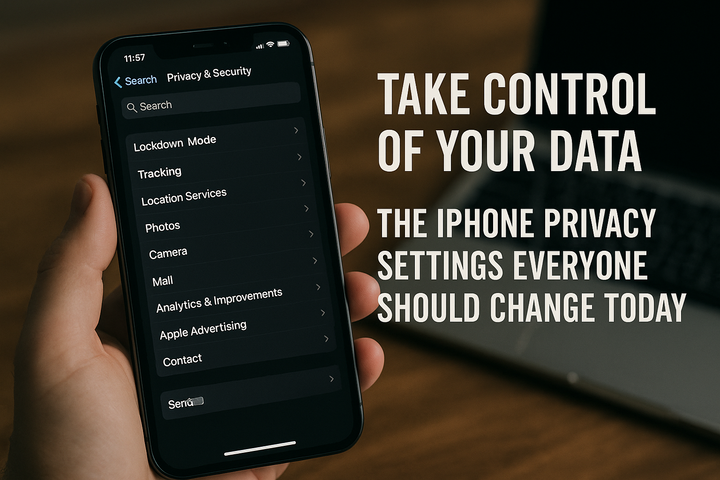How to Prepare for War in Your Country
Staying Safe, Informed, and Resilient When Crisis Hits

If your country edges toward conflict, preparation isn’t about fear — it’s about readiness.
War disrupts everything: power, food, communications, and trust.
The best way to protect your family and community is to plan ahead calmly and systematically.
This guide focuses on civilian safety and self-reliance, not violence. It’s about keeping yourself alive, informed, and connected when institutions break down.
Phase 1: What To Do Right Now
- Make a plan with your household. Pick meeting points (home, neighbor, out-of-area contact), agree on triggers for leaving vs staying, and assign responsibilities (who grabs documents, who pets, who contacts whom).
- Assemble a 72-hour “go” bag for each person (see checklist below).
- Secure important documents in a waterproof, fireproof bag and backup digital copies (encrypted).
- Get basic first-aid & CPR training (Red Cross / local health orgs).
- Know local routes & shelters. Identify at least two evacuation routes and the nearest official shelters. Bookmark maps offline.
1. Make a Family Plan
Decide where to meet, who contacts whom, and what triggers evacuation.
Pick:
- A home meeting point
- A nearby safe house (trusted friend or family)
- An out-of-area contact everyone messages if separated
2. Build Your 72-Hour “Go Bag” per person
Every person should have a bag they can grab in seconds.
Essentials include:
- Water: 3 litres/day × 3 days = 9 L (or water purification tablets + filter)
- Food: 3 days of nonperishable, ready-to-eat food (calorie-dense bars, canned meals, MREs)
- First aid kit (bandages, gauze, tape, antiseptic, pain relievers, personal meds — 7 days of prescriptions)
- Warm layers, hat, gloves, sturdy shoes
- Rain jacket + emergency blanket
- Flashlight (headlamp + spare batteries) and a small wind-up or battery radio
- Multi-tool, duct tape, zip ties
- Copies of ID, passports, insurance papers, key contact list, cash in local & small USD (or widely accepted)
- Phone charger + power bank, solar charger if possible
- Hygiene: toothbrush, wet wipes, small towel, hand sanitizer
- Whistle, small flashlight, local map (paper)
- Spare keys, small amount of personal comfort (photo)
- For infants/elderly: diapers, formula, medical supplies
- Face masks, eye protection
3. Safeguard Your Identity
Keep digital copies of passports, IDs, and bank records encrypted offline.
Store originals in a waterproof pouch.
Phase 2: Short-Term Readiness (Days → Weeks)
Shelter or Evacuate
Shelter/Stay vs Evacuate decision
- Follow official guidance. If told to evacuate, go early to avoid congestion.
- If sheltering in place: choose an interior room, away from windows; have materials to seal vents/windows if needed.
Food & water
- Build a 2-week pantry: canned protein, rice/pasta, cooking fat, powdered milk, high-calorie snacks.
- Store at least 14 litres of water per person (drinking + hygiene) or reliable water treatment.
Power & heating
- Have at least one reliable backup power source (power bank, small generator where legal, solar panel + battery) and safe fuel storage practices.
- Stock warm bedding and fuel alternatives for heating that are safe indoors (follow local safety rules).
Communications
- Establish an out-of-area contact (a single person outside the region who everyone texts when safe).
- Use SMS first — data networks can be overloaded. Have a secondary means: a battery-powered radio, or local HAM radio community info.
- Pre-write short message templates (e.g., “Safe, at home” / “Evacuating to X”).
Finance
- Keep some cash in small denominations (ATMs may be down).
- Access to accounts: keep account numbers, bank cards, and passwords stored securely (password manager + physical copy in safe).
- If you use digital currencies, keep one offline/cold backup of keys in a secure physical place.
Phase 3: Long-Term Resilience (Months → Years)
Home hardening (non-violent)
- Reinforce doors, add secure deadbolts, secure windows with shutters or boards.
- Fire safety: smoke detectors, fire extinguishers, evacuation ladders for upper floors.
Food & water security
- Grow a basic survival garden — staple crops, root storage, canning skills.
- Rainwater harvesting (where legal) + filtration system.
Energy independence
- Learn basics of solar + battery setups or alternative safe heating.
- Prioritize proven, safe systems and legal compliance.
Medical & skills
- Advanced first aid (wound care, splinting), water purification, sanitation, basic mechanics, and small-scale farming.
- Mental-health resilience training: stress management, peer support.
Community
- Build local networks — neighbors, community groups, volunteer emergency teams. Strength in coordination and sharing resources.
- Know where to get help: local NGOs, churches, community centers.
Digital safety (operational security)
- Back up important files offline and encrypted (external drive stored separately).
- Use strong, unique passwords and a password manager.
- Use end-to-end encrypted messaging for sensitive family/location info (Signal, where available).
- Be cautious posting live location/status publicly — it can put you and others at risk.
- Keep devices charged and portable power handy.
Legal, civic & informational steps
- Register with your embassy if you’re abroad.
- Monitor official channels only for evacuation orders and shelter info (government, emergency management, reputable NGOs). Avoid rumors on social media.
- Know your legal rights around curfews, checkpoints, and movement in your country.
- If you plan to donate or volunteer, coordinate with accredited humanitarian organizations.
What NOT to do
- Don’t spread unverified threats/rumors — they create panic.
- Don’t attempt to engage in combat or provide instructions on weapons or attacks.
- Don’t rely solely on social media — verify with multiple official sources.
- Don’t hoard to the point that neighbors lack basics — community cooperation saves lives.
Learn and Train
- First Aid & CPR (Red Cross or equivalent)
- Community Emergency Response (CERT)
- Fire safety, food preservation, and off-grid living basics
Quick-Start Timeline
Day 0–3: Go-bag, documents, contacts
Week 1–2: Stock pantry, first-aid course
Month 1: Power & comms backups, practice evacuation
3–12 Months: Build food/energy systems, community network
Final Word
Preparing for war isn’t paranoia — it’s responsibility.
In unstable times, readiness means freedom: the ability to protect your loved ones and rebuild when peace returns.
“Survival isn’t about fear. It’s about readiness.”



Comments ()